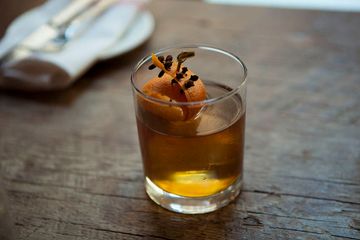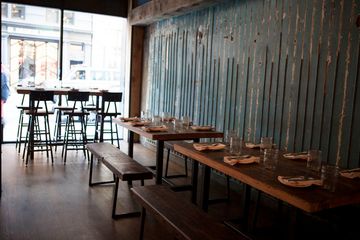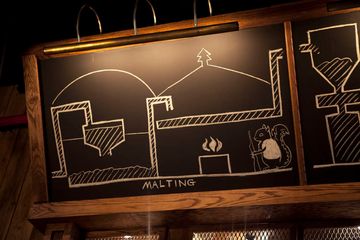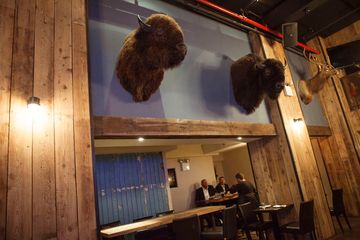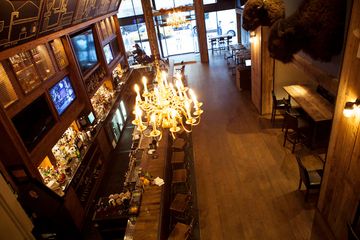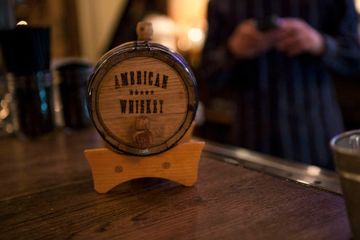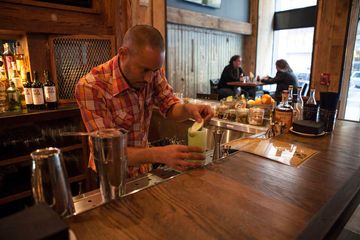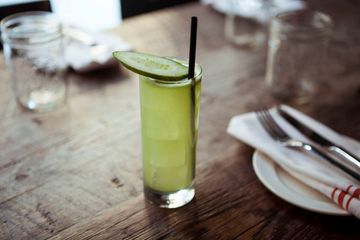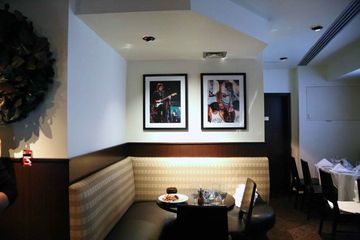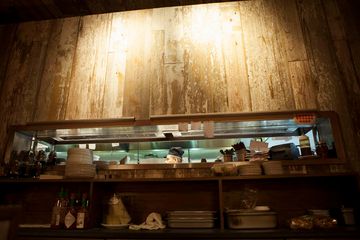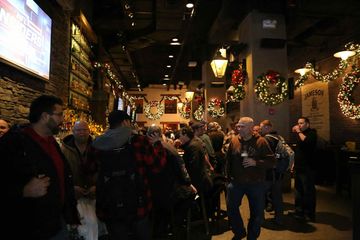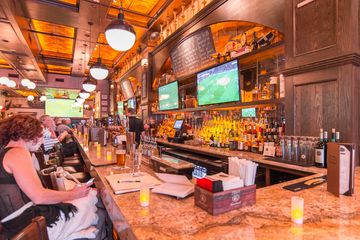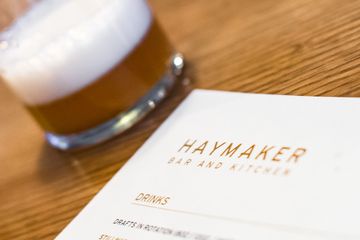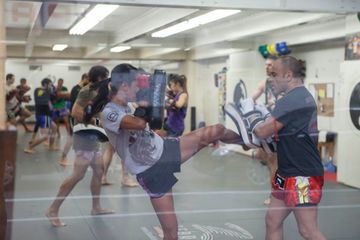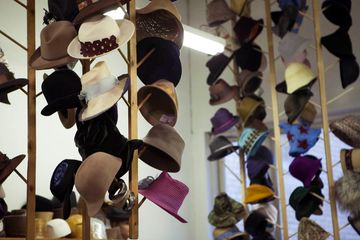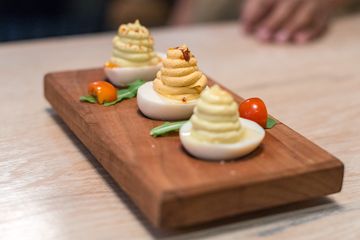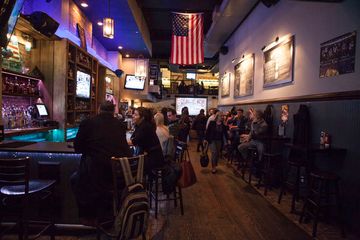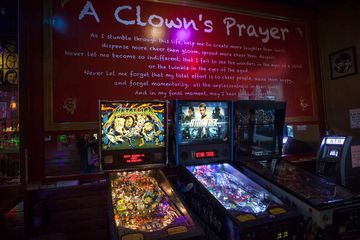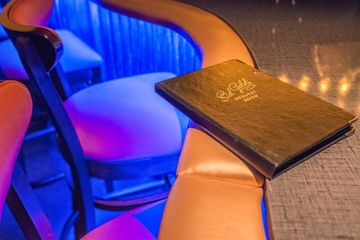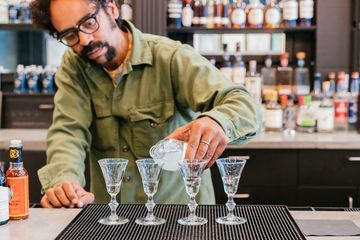
“Liquor-wise, whiskey is the greatest expression of America.” So said Jessica, bar manager at American Whiskey at the time that I visited. Opened in September 2013, the bar immediately attracted a large industry following with its nearly two hundred varieties of bourbons and rye. The bar is more versatile than that, however, with a southern, French-inspired food menu and full bar to complement, because, as Jessica says, “even us cocktail nerds want a beer and a shot sometimes.” Here, highbrow meets reality. Tans and grays line the space, with rough distressed wood showing through. Numerous flat screens are generously located throughout the bar, between giant busts of beasts.
Following our conversation with Jessica, we spoke with Casey, an owner of American Whiskey. As simple as the story is, we found it fascinating and truly applaud the dedication that it took for a bunch of friends to follow their dream. Between the five managing partners, they have trained behind the bar, managed a restaurant, cooked and even washed dishes – “you name it, we have done it,” Casey, told us. “We always knew that our end goal would be to open our own place. Once we graduated college and began to mature a bit, we got out of the beer mode and moved into the more refined and sophisticated world of alcohol.” Their vision from the beginning was to find a space large enough to accommodate their sport-themed bar, as they are avid fans of multiple games. One of the partners is a University of Georgia graduate, and managed to bring in several hundred Georgia football enthusiasts on a recent weekend. Casey said the place was electric.
Mimicking the theme of a vodka service, the guys came up with “barrel service.” Served right at the table are buckets of ice, glasses and one or three liter barrels, which are whiskey-based with a variety of mixers, ready to drink. Duane, one of the several in-house whiskey experts, spent time with us sharing his passion for Bourbon. It was quite interesting to hear him speak of his experience in Kentucky, this past spring, when a few of the partners went on a trip to gain further knowledge. “What better place to go than right to the state that is famous for this,” Duane said. However, he did go on to tell us that there are a number of states that manufacture their own whiskies – Iowa, Oregon and Montana were a few mentioned.
Duane chatted about the surrounding landscape where the whiskey is produced, saying “it breathes into the barrels” and emphasized the importance of the water source – “all combined, it makes for an outstanding whiskey.” The enthusiasm for the drink was contagious. Having only had tiny tastes over the years, I broke down and took a few sips of Duane’s signature “Strike Me Dead.” Templeton Rye (dating from the Prohibition), black pepper, maple syrup and maple bitters were combined and finished off with some orange zest and cloves. The result was powerful and flavorful. Following that, I tried Duane's other favorite drink, “Floral Collins,” consisting of Fords gin, cucumber juice, lavender syrup, fresh squeezed lime juice, maraschino liqueur and a slice of cucumber. Esteban, our photographer, was asked which concoction he preferred and answered that they had, “Equal goodness.” Duane has spent the last three years living and breathing whiskey. Although incredibly conversant on the subject, he describes himself as being “humble” and said that he is simply dedicated to delivering the message of our country’s whiskey, “the voice of reason.”
